Seagrass and salt marshes team up to fight coastal erosion
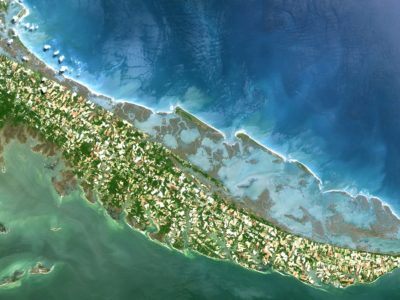
Researchers at the Virginia Coast Reserve LTER recently found that adjacent patches of salt marsh and seagrass increase sedimentation benefits in shallow coastal bays.

Researchers at the Virginia Coast Reserve LTER recently found that adjacent patches of salt marsh and seagrass increase sedimentation benefits in shallow coastal bays.
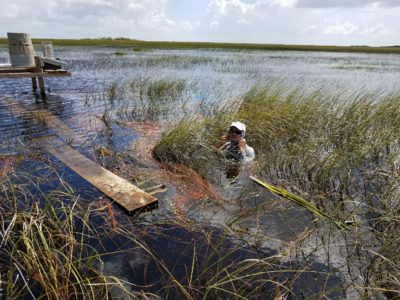
2018 ESA Annual Meeting Presentations In the past year alone, extreme events including hurricanes, droughts, and extensive fires have impacted significant regions of the United States—affecting the health of both natural habitats and human communities. Fittingly, the theme of this year’s Ecological Society of America (ESA) annual meeting is ‘Extreme events, resilience and human well-being.’… Read more »
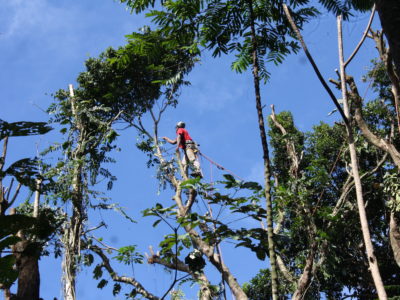
Hurricanes are typically considered destructive and disastrous, with high-speed winds exceeding 75 miles per hour and torrential downpours. These powerful storms can have major impacts on tropical forests, ripping open the forest canopy and causing organic debris to pile up on the forest floor. Despite these seemingly destructive qualities, new research suggests that ecological disturbance… Read more »
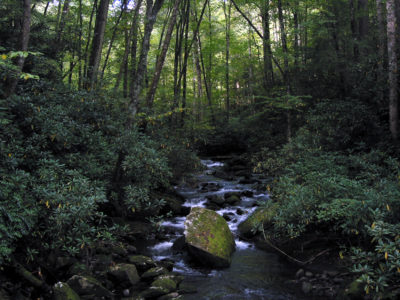
In ecology, timing is key to understanding how daily, seasonal, or yearly cycles impact environmental processes. But it’s not just about how often impacts occur, but also over what length of time. Decades worth of data synthesized by researchers at Coweeta LTER provide some of the clearest evidence to date that long-term observations of ecosystem… Read more »

I paused at the top of Coweeta Hydrologic Lab’s transect #327, peering down, down, down at the slope beneath me. Katie Bower, a research technician at Coweeta, and two summer interns had already started down the narrow pathway, accustomed to its slippery leaf layer and sharp contours. Taking a deep breath, I followed slowly behind.
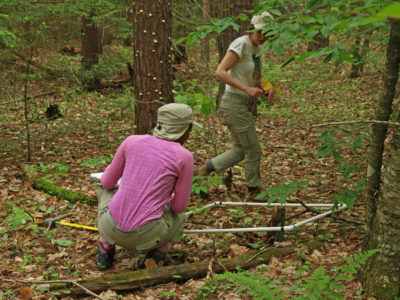
To evaluate the effects of soil warming, scientists have measured soil gases including methane, nitrous oxide, and carbon dioxide as well as nitrogen fluxes every month since 1991, comparing the heated plots to control plots nearby. One of the most interesting results they have documented comes from the forest’s tiniest organisms – the microbes that digest downed leaves and branches (also known as the ecosystem’s detritus). At first, the microbes worked overtime in the heated plots, releasing more carbon dioxide through their respiration.
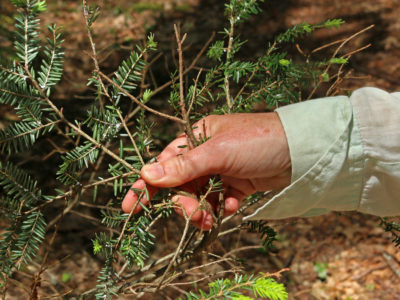
The hemlock is a native tree species that was once common from northern Alabama to Nova Scotia. Stretching tall with thick needles, the hemlock creates an entire ecosystem beneath its large branches. In the Smoky Mountains, its shade used to cool streams just enough to allow the eastern brook trout to thrive. Unfortunately, these hemlocks are in dramatic decline.

The majority of grasslands around the world have been destroyed or converted for human use, either for agricultural or urban development. In North America, for example, only four percent of the once vast tallgrass prairies are left. Understanding grassland community dynamics could be a critical part of conserving those that remain. Plant-pollinator relationships are… Read more »
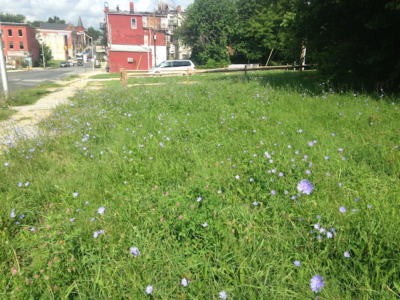
If you live in a city, chances are you’ve seen an abandoned lot or two. While urban dwellers may not immediately think of vacant lots as harboring rare species and scenic natural vistas, they are are often candidates for urban conservation, restoration, or greening projects. The success of such projects depends on understanding what processes control… Read more »
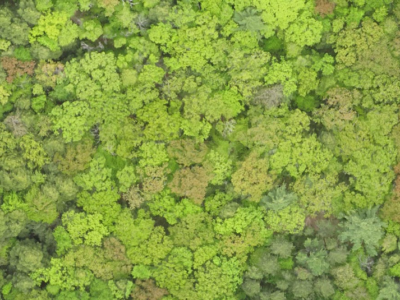
As this winter continues to bring freezing temperatures and intense “bomb cyclone” snow storms to the eastern U.S., many are wondering: “When, exactly, will spring arrive?” Researchers with the Harvard Forest LTER were wondering the same thing as they conducted a study using drones to track timing of phenological events in a mixed forest ecosystem… Read more »
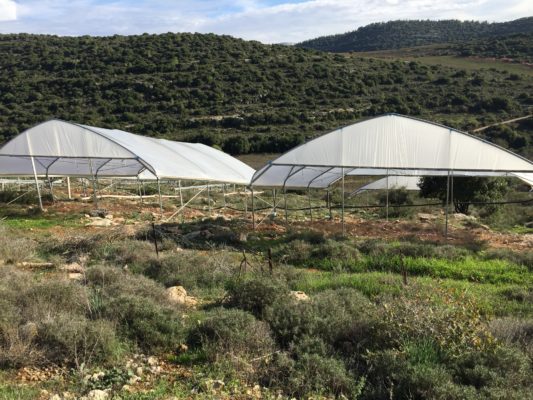 International Drought Experiment" data-envira-gallery-id="site_images_78454" data-envira-index="5" data-envira-item-id="82314" data-envira-src="https://lternet.edu/wp-content/uploads/2020/01/Matta_rainout-533x400.jpeg" data-envira-srcset="https://lternet.edu/wp-content/uploads/2020/01/Matta_rainout-533x400.jpeg 400w, https://lternet.edu/wp-content/uploads/2020/01/Matta_rainout-533x400.jpeg 2x" data-title="Matta_rainout" itemprop="thumbnailUrl" data-no-lazy="1" data-envirabox="site_images_78454" data-automatic-caption="Matta_rainout - Researchers use rainout shelters at the Matta International LTER site in Israel to simulate..." data-envira-height="225" data-envira-width="300" />
International Drought Experiment" data-envira-gallery-id="site_images_78454" data-envira-index="5" data-envira-item-id="82314" data-envira-src="https://lternet.edu/wp-content/uploads/2020/01/Matta_rainout-533x400.jpeg" data-envira-srcset="https://lternet.edu/wp-content/uploads/2020/01/Matta_rainout-533x400.jpeg 400w, https://lternet.edu/wp-content/uploads/2020/01/Matta_rainout-533x400.jpeg 2x" data-title="Matta_rainout" itemprop="thumbnailUrl" data-no-lazy="1" data-envirabox="site_images_78454" data-automatic-caption="Matta_rainout - Researchers use rainout shelters at the Matta International LTER site in Israel to simulate..." data-envira-height="225" data-envira-width="300" />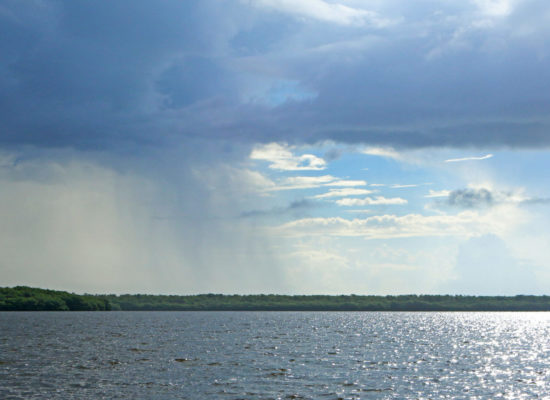 E Zambello/LTER Network Office CC BY 4.0" data-envira-gallery-id="site_images_78454" data-envira-index="6" data-envira-item-id="82145" data-envira-src="https://lternet.edu/wp-content/uploads/2019/11/Everglades-National-Park-scaled-e1574660761311-550x400.jpg" data-envira-srcset="https://lternet.edu/wp-content/uploads/2019/11/Everglades-National-Park-scaled-e1574660761311-550x400.jpg 400w, https://lternet.edu/wp-content/uploads/2019/11/Everglades-National-Park-scaled-e1574660761311-550x400.jpg 2x" data-title="Everglades National Park" itemprop="thumbnailUrl" data-no-lazy="1" data-envirabox="site_images_78454" data-automatic-caption="Everglades National Park - E Zambello/LTER Network Office CC BY 4.0" data-envira-height="218" data-envira-width="300" />
E Zambello/LTER Network Office CC BY 4.0" data-envira-gallery-id="site_images_78454" data-envira-index="6" data-envira-item-id="82145" data-envira-src="https://lternet.edu/wp-content/uploads/2019/11/Everglades-National-Park-scaled-e1574660761311-550x400.jpg" data-envira-srcset="https://lternet.edu/wp-content/uploads/2019/11/Everglades-National-Park-scaled-e1574660761311-550x400.jpg 400w, https://lternet.edu/wp-content/uploads/2019/11/Everglades-National-Park-scaled-e1574660761311-550x400.jpg 2x" data-title="Everglades National Park" itemprop="thumbnailUrl" data-no-lazy="1" data-envirabox="site_images_78454" data-automatic-caption="Everglades National Park - E Zambello/LTER Network Office CC BY 4.0" data-envira-height="218" data-envira-width="300" />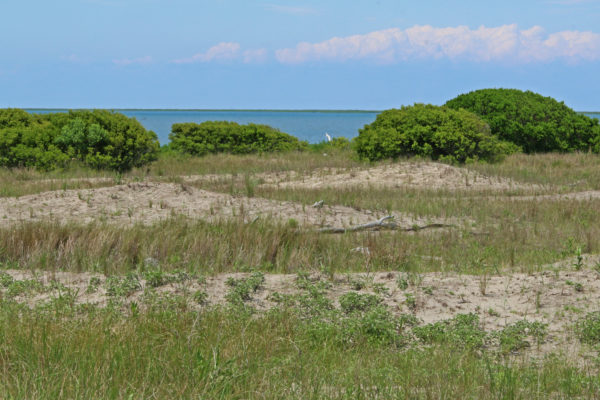 E Zambello/LTER-NCO CC BY 4.0" data-envira-gallery-id="site_images_78454" data-envira-index="16" data-envira-item-id="80811" data-envira-src="https://lternet.edu/wp-content/uploads/2019/01/Barrier-island-shrubs-600x400.jpg" data-envira-srcset="https://lternet.edu/wp-content/uploads/2019/01/Barrier-island-shrubs-600x400.jpg 400w, https://lternet.edu/wp-content/uploads/2019/01/Barrier-island-shrubs-600x400.jpg 2x" data-title="Barrier island shrubs" itemprop="thumbnailUrl" data-no-lazy="1" data-envirabox="site_images_78454" data-automatic-caption="Barrier island shrubs - Sand dunes giving way to taller shrubs that have rapidly expanded on these barrier islands thanks..." data-envira-height="188" data-envira-width="300" />
E Zambello/LTER-NCO CC BY 4.0" data-envira-gallery-id="site_images_78454" data-envira-index="16" data-envira-item-id="80811" data-envira-src="https://lternet.edu/wp-content/uploads/2019/01/Barrier-island-shrubs-600x400.jpg" data-envira-srcset="https://lternet.edu/wp-content/uploads/2019/01/Barrier-island-shrubs-600x400.jpg 400w, https://lternet.edu/wp-content/uploads/2019/01/Barrier-island-shrubs-600x400.jpg 2x" data-title="Barrier island shrubs" itemprop="thumbnailUrl" data-no-lazy="1" data-envirabox="site_images_78454" data-automatic-caption="Barrier island shrubs - Sand dunes giving way to taller shrubs that have rapidly expanded on these barrier islands thanks..." data-envira-height="188" data-envira-width="300" />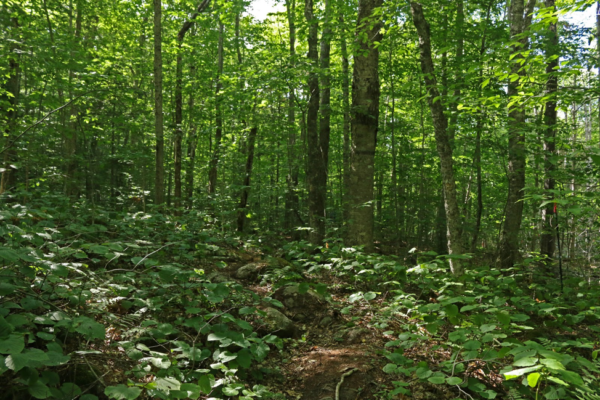 E Zambello/LTER-NCO CC BY 4.0" data-envira-gallery-id="site_images_78454" data-envira-index="17" data-envira-item-id="80711" data-envira-src="https://lternet.edu/wp-content/uploads/2019/01/HB-droughtnet1-600x400.png" data-envira-srcset="https://lternet.edu/wp-content/uploads/2019/01/HB-droughtnet1-600x400.png 400w, https://lternet.edu/wp-content/uploads/2019/01/HB-droughtnet1-600x400.png 2x" data-title="HB droughtnet1" itemprop="thumbnailUrl" data-no-lazy="1" data-envirabox="site_images_78454" data-automatic-caption="HB droughtnet1 - A northern temperate forest on a summer afternoon. E Zambello/LTER-NCO CC BY 4.0" data-envira-height="200" data-envira-width="300" />
E Zambello/LTER-NCO CC BY 4.0" data-envira-gallery-id="site_images_78454" data-envira-index="17" data-envira-item-id="80711" data-envira-src="https://lternet.edu/wp-content/uploads/2019/01/HB-droughtnet1-600x400.png" data-envira-srcset="https://lternet.edu/wp-content/uploads/2019/01/HB-droughtnet1-600x400.png 400w, https://lternet.edu/wp-content/uploads/2019/01/HB-droughtnet1-600x400.png 2x" data-title="HB droughtnet1" itemprop="thumbnailUrl" data-no-lazy="1" data-envirabox="site_images_78454" data-automatic-caption="HB droughtnet1 - A northern temperate forest on a summer afternoon. E Zambello/LTER-NCO CC BY 4.0" data-envira-height="200" data-envira-width="300" />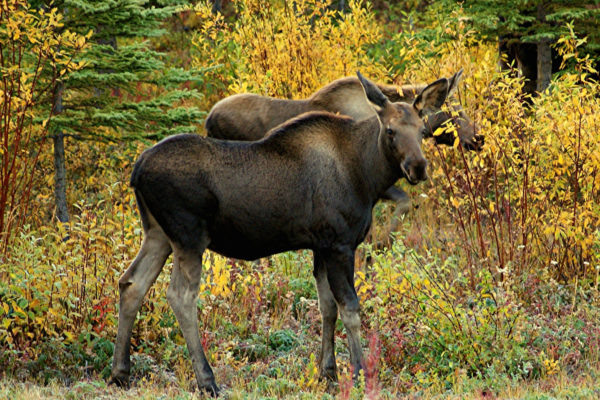 JLS Photography Alaska via Flickr CC BY-NC-ND 2.0" data-envira-gallery-id="site_images_78454" data-envira-index="19" data-envira-item-id="80191" data-envira-src="https://lternet.edu/wp-content/uploads/2018/11/9094565976_da2f481fc3_k-600x400.jpg" data-envira-srcset="https://lternet.edu/wp-content/uploads/2018/11/9094565976_da2f481fc3_k-600x400.jpg 400w, https://lternet.edu/wp-content/uploads/2018/11/9094565976_da2f481fc3_k-600x400.jpg 2x" data-title="JLS Photography_Alaska moose" itemprop="thumbnailUrl" data-no-lazy="1" data-envirabox="site_images_78454" data-automatic-caption="JLS Photography_Alaska moose - One management goal in the Boreal forests of Alaska is to maintain habitat diversity to support..." data-envira-height="241" data-envira-width="300" />
JLS Photography Alaska via Flickr CC BY-NC-ND 2.0" data-envira-gallery-id="site_images_78454" data-envira-index="19" data-envira-item-id="80191" data-envira-src="https://lternet.edu/wp-content/uploads/2018/11/9094565976_da2f481fc3_k-600x400.jpg" data-envira-srcset="https://lternet.edu/wp-content/uploads/2018/11/9094565976_da2f481fc3_k-600x400.jpg 400w, https://lternet.edu/wp-content/uploads/2018/11/9094565976_da2f481fc3_k-600x400.jpg 2x" data-title="JLS Photography_Alaska moose" itemprop="thumbnailUrl" data-no-lazy="1" data-envirabox="site_images_78454" data-automatic-caption="JLS Photography_Alaska moose - One management goal in the Boreal forests of Alaska is to maintain habitat diversity to support..." data-envira-height="241" data-envira-width="300" />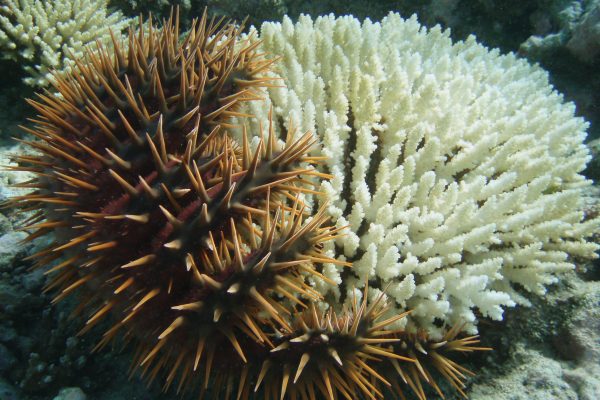 CC BY-SA 4.0" data-envira-gallery-id="site_images_78454" data-envira-index="30" data-envira-item-id="46180" data-envira-src="https://lternet.edu/wp-content/uploads/2017/11/P7193263-copy-600x400.jpg" data-envira-srcset="https://lternet.edu/wp-content/uploads/2017/11/P7193263-copy-600x400.jpg 400w, https://lternet.edu/wp-content/uploads/2017/11/P7193263-copy-600x400.jpg 2x" data-title="Crown-of-thorns Sea Star" itemprop="thumbnailUrl" data-no-lazy="1" data-envirabox="site_images_78454" data-automatic-caption="Crown-of-thorns Sea Star - A Crown_of-thorns seastar or COTS (Acanthaster planci) feeding on a coral colony. MCR LTER. CC..." data-envira-height="201" data-envira-width="300" />
CC BY-SA 4.0" data-envira-gallery-id="site_images_78454" data-envira-index="30" data-envira-item-id="46180" data-envira-src="https://lternet.edu/wp-content/uploads/2017/11/P7193263-copy-600x400.jpg" data-envira-srcset="https://lternet.edu/wp-content/uploads/2017/11/P7193263-copy-600x400.jpg 400w, https://lternet.edu/wp-content/uploads/2017/11/P7193263-copy-600x400.jpg 2x" data-title="Crown-of-thorns Sea Star" itemprop="thumbnailUrl" data-no-lazy="1" data-envirabox="site_images_78454" data-automatic-caption="Crown-of-thorns Sea Star - A Crown_of-thorns seastar or COTS (Acanthaster planci) feeding on a coral colony. MCR LTER. CC..." data-envira-height="201" data-envira-width="300" /> Erika Zambello/LTER NCO. CC BY-SA 4.0." data-envira-gallery-id="site_images_78454" data-envira-index="31" data-envira-item-id="46166" data-envira-src="https://lternet.edu/wp-content/uploads/2017/11/vcr-2-600x400.jpg" data-envira-srcset="https://lternet.edu/wp-content/uploads/2017/11/vcr-2-600x400.jpg 400w, https://lternet.edu/wp-content/uploads/2017/11/vcr-2-600x400.jpg 2x" data-title="vcr-cement-blocks" itemprop="thumbnailUrl" data-no-lazy="1" data-envirabox="site_images_78454" data-automatic-caption="vcr-cement-blocks - Submerged cement blocks rest below the sea level. Erika Zambello/LTER NCO. CC BY-SA 4.0." data-envira-height="200" data-envira-width="300" />
Erika Zambello/LTER NCO. CC BY-SA 4.0." data-envira-gallery-id="site_images_78454" data-envira-index="31" data-envira-item-id="46166" data-envira-src="https://lternet.edu/wp-content/uploads/2017/11/vcr-2-600x400.jpg" data-envira-srcset="https://lternet.edu/wp-content/uploads/2017/11/vcr-2-600x400.jpg 400w, https://lternet.edu/wp-content/uploads/2017/11/vcr-2-600x400.jpg 2x" data-title="vcr-cement-blocks" itemprop="thumbnailUrl" data-no-lazy="1" data-envirabox="site_images_78454" data-automatic-caption="vcr-cement-blocks - Submerged cement blocks rest below the sea level. Erika Zambello/LTER NCO. CC BY-SA 4.0." data-envira-height="200" data-envira-width="300" />